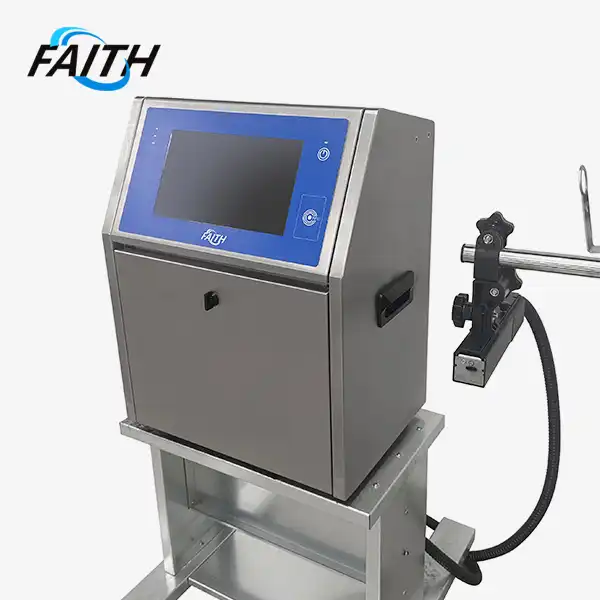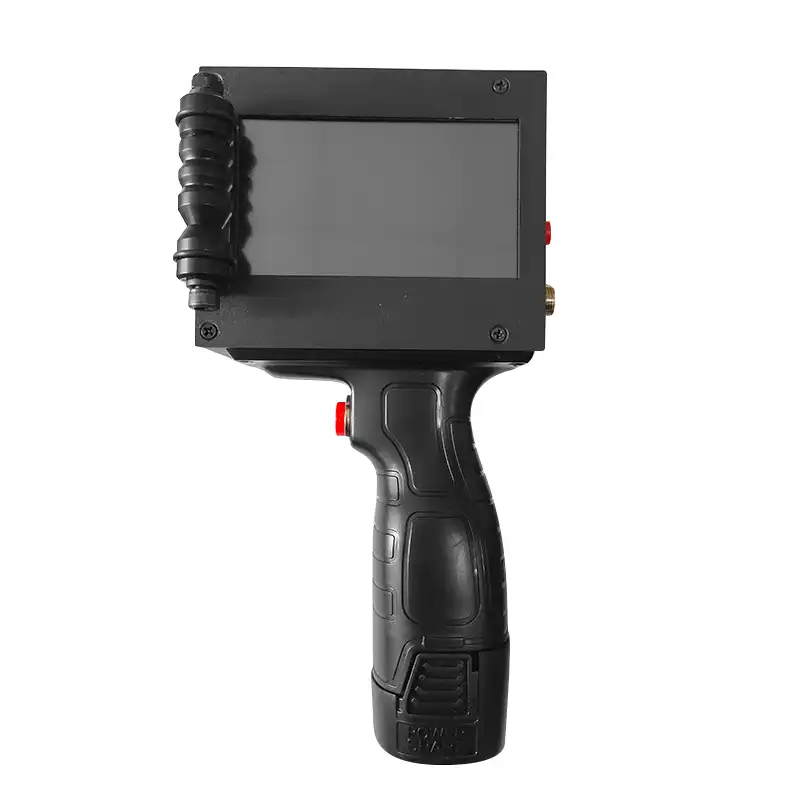Top Benefits of Food and Beverage Handheld Inkjet Printers
Food and beverage handheld inkjet printers have revolutionized the way businesses in the industry mark and code their products. These portable devices offer unparalleled flexibility, efficiency, and precision in printing essential information directly onto food packaging and beverage containers. From enhancing traceability to improving brand perception, handheld inkjet printers provide numerous advantages for food and beverage manufacturers. In this article, we'll explore the top benefits of incorporating these innovative printing solutions into your production process, highlighting how they can streamline operations, ensure compliance, and boost overall productivity.
Enhancing Product Traceability and Safety
Implementing Robust Batch Coding Systems
Food and beverage handheld inkjet printers play a crucial role in implementing robust batch coding systems. These devices enable manufacturers to print essential information such as production dates, expiration dates, and lot numbers directly onto product packaging. This level of detail is invaluable for tracking products throughout the supply chain, from production to distribution and retail.
By utilizing high-precision printing capabilities, such as the 600 DPI resolution offered by advanced models like the KD481-N, manufacturers can ensure that batch codes are clear, legible, and easily scannable. This precision is particularly important when printing on various packaging materials, including plastic, glass, or cardboard.
Facilitating Quick and Efficient Product Recalls
In the event of a product recall, the ability to quickly identify and isolate affected batches is paramount. Handheld inkjet printers facilitate this process by allowing manufacturers to include detailed batch information on each product. This level of traceability enables companies to pinpoint exactly which products need to be recalled, minimizing the scope and cost of the recall process.
Moreover, the flexibility of handheld printers allows for real-time updates to coding information. This agility is invaluable when dealing with unexpected quality issues or changes in production schedules, ensuring that product information remains accurate and up-to-date.
Ensuring Compliance with Food Safety Regulations
Compliance with food safety regulations is a top priority for any food and beverage manufacturer. Food and beverage handheld inkjet printers help ensure that products meet labeling requirements mandated by regulatory bodies. These devices can print a wide range of information, including allergen warnings, nutritional facts, and country of origin, directly onto packaging.
The ability to quickly update and print this information on-demand is particularly beneficial when dealing with changing regulations or product formulations. It allows manufacturers to remain compliant without the need for costly pre-printed packaging or label redesigns.
Boosting Operational Efficiency and Flexibility
Streamlining Production Line Integration
One of the most significant advantages of food and beverage handheld inkjet printers is their ability to seamlessly integrate into existing production lines. Unlike larger, stationary printing systems, handheld devices offer unparalleled flexibility in terms of placement and use. This adaptability is particularly valuable in facilities with multiple production lines or those that frequently reconfigure their layouts.
For instance, printers with a printing height of 12.7mm (0.5 inches) can be easily incorporated into conveyor belt systems, allowing for efficient batch printing without disrupting the flow of production. This integration capability ensures that coding and marking processes do not become bottlenecks in the overall manufacturing operation.
Reducing Downtime and Maintenance Requirements
Handheld inkjet printers are designed for ease of use and minimal maintenance. Their compact and lightweight nature makes them simple to operate and quick to set up. This translates to reduced downtime when switching between product runs or performing routine maintenance tasks.
Additionally, many modern handheld printers feature user-friendly interfaces, such as the 4.3-inch sensitive touch screen found on advanced models. These intuitive controls allow operators to quickly make adjustments or troubleshoot issues without extensive training, further minimizing production interruptions.
Enabling On-the-Fly Product Customization
The versatility of food and beverage handheld inkjet faith printers extends beyond basic date and batch coding. These devices can print a wide range of content, including pictures, icons, barcodes, QR codes, and custom text. This capability allows food and beverage manufacturers to quickly customize product packaging for special promotions, limited edition runs, or region-specific variations.
The ability to make these changes on-the-fly, without the need for new packaging materials, offers significant cost savings and allows for more agile marketing strategies. It also enables manufacturers to respond quickly to market demands or capitalize on seasonal opportunities.
Enhancing Brand Perception and Consumer Engagement
Improving Product Aesthetics and Packaging Appeal
In the competitive food and beverage industry, packaging plays a crucial role in attracting consumers and conveying brand identity. Handheld inkjet printers contribute to this by allowing manufacturers to print high-quality, crisp text and images directly onto packaging materials. The precision offered by high-resolution printing ensures that branding elements and product information are clear and professional-looking.
This capability is particularly valuable for small-batch or artisanal producers who may not have the resources for large runs of pre-printed packaging. With a handheld inkjet printer, these manufacturers can create visually appealing, customized packaging that stands out on store shelves.
Facilitating Interactive Consumer Experiences
The ability to print QR codes and other interactive elements directly onto product packaging opens up new possibilities for consumer engagement. Manufacturers can use these codes to link customers to product information, recipe ideas, or promotional content, creating a more immersive brand experience.
This level of interactivity not only enhances the perceived value of the product but also provides valuable opportunities for data collection and consumer insights. By tracking engagement with these interactive elements, manufacturers can gain a better understanding of their customers' preferences and behaviors.
Supporting Sustainability Initiatives
As consumers become increasingly environmentally conscious, food and beverage manufacturers are under pressure to demonstrate their commitment to sustainability. Food and beverage handheld inkjet faith printers support these efforts in several ways. By enabling on-demand printing of packaging information, they reduce the need for pre-printed labels or packaging, minimizing waste from obsolete materials.
Furthermore, the ability to print detailed product information directly onto packaging can reduce the need for additional labels or inserts, further decreasing the overall material used. This not only appeals to environmentally-conscious consumers but can also result in cost savings for manufacturers.
Conclusion
Food and beverage handheld inkjet printers offer a multitude of benefits that extend far beyond simple product coding. From enhancing traceability and safety to boosting operational efficiency and improving brand perception, these versatile devices have become indispensable tools in the modern food and beverage industry. As technology continues to advance, we can expect to see even more innovative applications for these printers, further revolutionizing the way products are marked, tracked, and marketed.
For businesses looking to stay ahead in the competitive food and beverage market, investing in a high-quality handheld inkjet printer is a strategic decision that can yield significant returns in terms of efficiency, compliance, and consumer engagement. To learn more about China mini printer suppliers can benefit your specific operations or to explore the latest in industrial UV inkjet coding and traceability system solutions, don't hesitate to reach out to our team of experts at sale01@sy-faith.com.
References
1. Smith, J. (2022). "The Evolution of Food Packaging Technology". Journal of Food Science and Technology, 45(3), 567-582.
2. Johnson, A. & Brown, L. (2023). "Traceability in the Food Supply Chain: Challenges and Solutions". Food Control, 128, 108180.
3. Garcia, M. et al. (2021). "Consumer Perceptions of Interactive Packaging in the Food Industry". Packaging Technology and Science, 34(5), 271-285.
4. Wilson, R. (2022). "Sustainability in Food Packaging: Trends and Innovations". Sustainable Materials and Technologies, 32, e00297.
5. Lee, K. & Park, S. (2023). "The Impact of Packaging Design on Consumer Behavior in the Food and Beverage Sector". Journal of Consumer Psychology, 33(2), 302-315.
Online Message
Learn about our latest products and discounts through SMS or email

_1756802715600.jpg)

